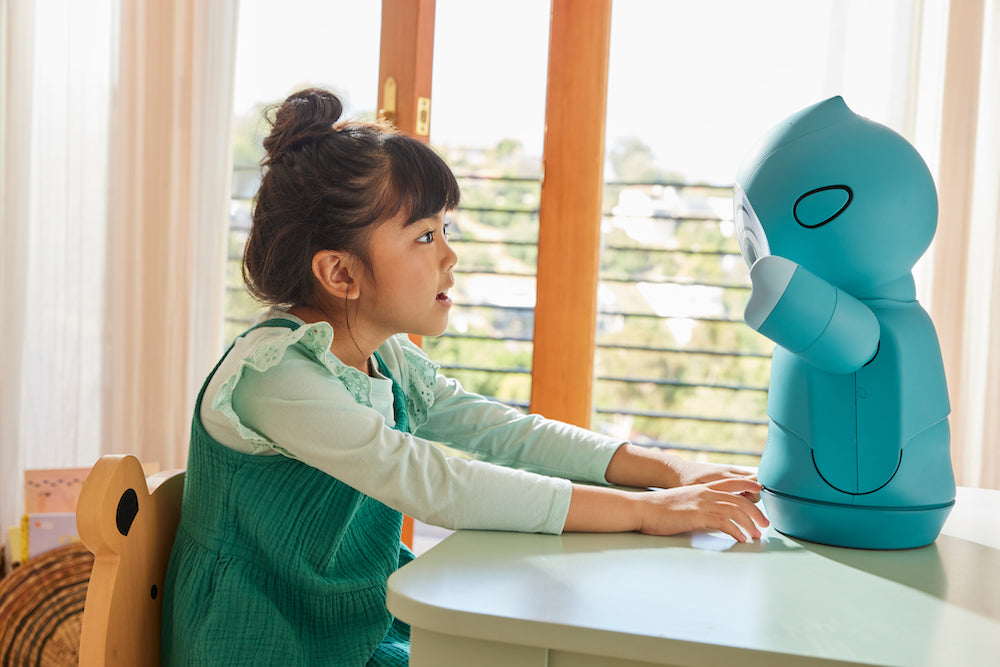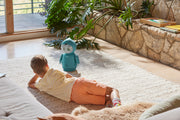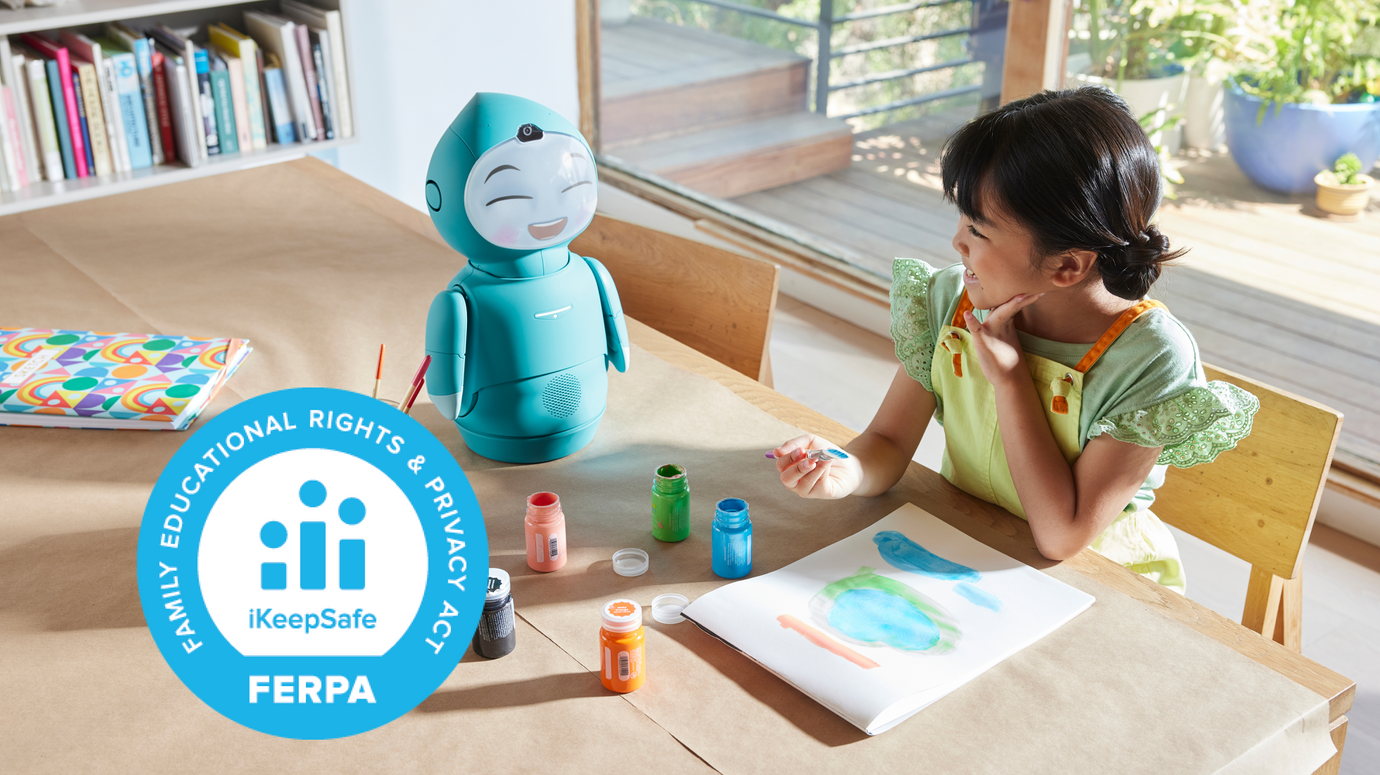Helping Your Child Manage Anxiety

When interacting with Moxie, your child will be encouraged to open up about their feelings and introduced to tools to manage their emotions. You can continue the learning your child is doing with Moxie and support them at home when they are feeling anxious by:
Recognizing the Signs
Children don’t always know how to verbalize their emotions, so it’s important to recognize potential signs of anxiety in your child. These include:
- Changes to sleeping habits, such as sleeping too much or too little
- Changes to eating habits
- Difficulty concentrating at school
- Difficulty completing assignments
- Avoidance of activities once enjoyed
- Decreased confidence
- Increase in stomach aches or headaches
- Restlessness or jitteriness
- Increase in meltdowns
If your child seems anxious, try to identify any triggers they may have encountered. Maybe they are anxious about going to school or are showing signs of anxiety at bedtime. Identifying triggers can help both you and your child identify what is causing the anxiety. Then, you can come up with a plan!
Talking About Feelings
Create a safe space for your child to open up about their feelings. Here are some things to keep in mind when talking to your child about their anxiety:
- Is your child in the middle of a meltdown? Help them return to a calmer state before trying to discuss anything. Children will not be able to engage in a conversation if they are dysregulated.
- When talking to your child about their feelings, do not label them as “good” or “bad.” All humans have a range of emotions and that is normal.
- If your child shares their reasons for feeling anxious, allow them to have whatever feelings they are having and do not dismiss unrealistic outcomes. Express confidence that they will be fine and model some tools for coping with anxiety.
- Your child wants to know that everything is going to be okay, and that they will survive their feelings, and whatever circumstance is making them anxious. If it makes sense, you can also share about your own moments of anxiety and what tools you use.
Managing Meltdowns
Sometimes children experience intense feelings of anxiety which lead to meltdowns.
Here are some regulation tools you can use with your child once you’ve noticed the signs of anxiety but before a meltdown:
-
Animal Breathing: Your child has already done Animal Breathing with Moxie!
Ask your child to show you one of the animal breaths, or just say, “Moxie, let’s do Animal Breathing.” . Good animal breaths for anxiety are Bee Breaths, Snake Breaths, and Kitten Breaths.
- Imagine a Place: Moxie will take your child on an imaginative journey of sight, smell, and sound. This exercise is great for settling the mind and moving into a more positive space. You can request this activity on Moxie by saying, “Moxie, let’s Imagine a Place.”
- Weights of Comfort: If your child likes deep pressure input, squeezing their hand or giving them a long hug can be very calming. A weighted blanket or stuffed animal can also be effective.
- Five Senses Activity: Ask your child to take a few deep breaths in through their nose and out through their mouth. Then have them tell you 5 things they can see, 4 things they can hear, 3 things they can touch, 2 things they can smell, and 1 thing they can taste. For some children, it can be helpful to make the activity simpler: 3 things you can see, 2 things you can hear, 1 thing you can touch.
- Box Breathing: Ask your child to breathe in through their nose for 3 seconds, hold their breath for 3 seconds, breath out through their mouth for 3 seconds, and hold their breath for 3 seconds. Repeat for as long as needed.
- Fidget Toys: Remind your child to have a fidget toy with them at all times if they find it helpful. A focus on a fidget toy can relieve anxiety.
Making a Plan
Sometimes feelings of anxiety come out of nowhere, and it can be helpful to have a plan in place. Talk with your child about how to let you know when they are feeling anxious, either through words or maybe a special “signal.”
If your child has anxiety about an upcoming event, such as a doctor’s appointment, consider giving your child factual information about what to expect. Role playing is also a great tool for preparing for an event.
Anxiety is just one of many powerful emotions that everyone feels at some point in their lives. Moxie is here to help you and your child learn to identify those emotions and then apply appropriate emotion regulation strategies. This will build up your child’s confidence, and you may notice that they navigate the world a little differently with these tools in their toolbox.







